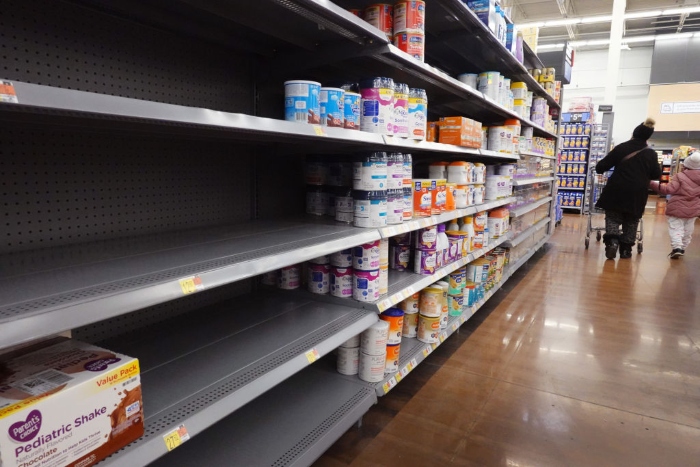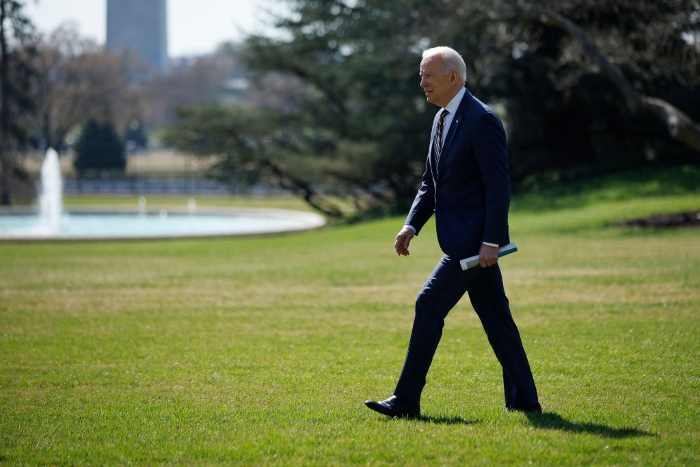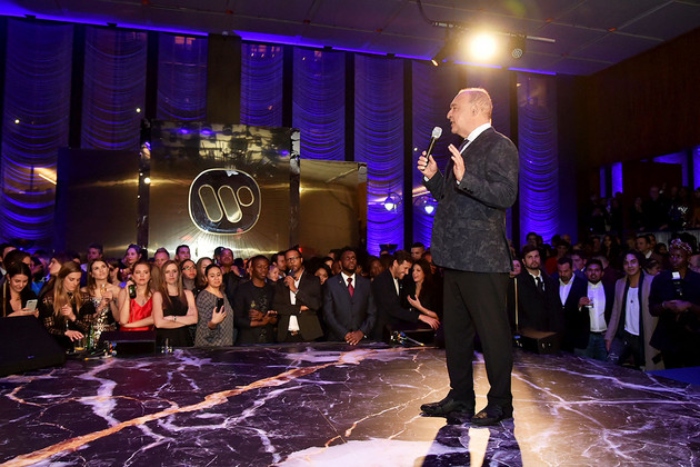| | |  | BY HELENA BOTTEMILLER EVICH | QUESTIONING THE FORMULA — I had been covering the deadly infant formula recall for about two weeks before I finally broke down and cried. A sweeping recall of some of the biggest names in baby formula — including Similac — has been tied to a handful of hospitalizations, including two infant deaths. As POLITICO first reported, FDA, CDC and formula-maker Abbott were told in September about the first baby who got sick from Cronobacter sakazakii, a rare bacteria — several months before the massive product recall in mid-February. Lawmakers have begun to ask questions about the timeline of the recall. TikTok, of all things, sent me over the edge. I had seen someone mention on Twitter that they’d noticed moms talking about formula and sick kids on TikTok. Within seconds of searching “similac,” I came across several videos and photo montages of babies in the hospital, hooked up to monitors, IVs and all manner of tubes. One was even getting a spinal tap, something that can help diagnose serious infections. “I’ll never trust another formula again,” wrote one mom on top of a video of a baby in a hospital crib. The mom added a bunch of hashtags to drive the point #similac #screwyou #pissed. “My Queen is Sick #SimilacRecall,” wrote another mom. As the mom of a toddler, I could easily imagine the agony of these parents. But as a reporter, I have another question: Why are there so many sick babies on TikTok? Their parents believe they were sickened by formula. Were they? Remember, CDC’s official count for this outbreak is just four cases, including two deaths. FDA this week issued an update to say it was dropping one case of Salmonella Newport that had been previously tied to the outbreak (that infant was hospitalized but survived). In the small number of cases that have been tied — or even tied and then dropped — the infant reportedly consumed formula that was made at a single Abbott Nutrition plant in Sturgis, Mich. That plant has been at the center of what is the largest formula recall in memory.
| 
Baby formula is offered for sale at a big box store in Chicago. | Scott Olson/Getty Images | Yet these cases are extremely hard to link back to a specific product. A doctor needs to have ordered the right tests. The pathogen detected needs to have its genetic fingerprint taken and reported into CDC’s database. In this case, one huge challenge is the fact that Cronobacter sakazakii is not a nationally notifiable disease, which means cases are not required to be reported to CDC. Even when cases are reported, there often is no smoking gun. And circumstantial evidence isn’t enough, most of the time. This is how FDA explained dropping the Salmonella case this week: “After further investigation, the FDA has determined that there is not enough information to definitively link this illness to powdered infant formula,” the agency said. “CDC confirmed that this single Salmonella illness is not linked to an outbreak. The FDA and CDC are continuing to monitor for Salmonella cases and consumer complaints that may be related to this incident.” FDA has received many more consumer complaints about formula making babies sick. I have talked and texted with many of these parents. They are livid. It’s shockingly easy to find parents who believe their babies were sickened by formula. Parents are all over the comment section on Abbott’s Instagram account reporting that their babies were violently ill or hospitalized in recent months. I interviewed one Florida mom last week who told me her daughter had almost died after being fed formula that was later recalled. Her daughter survived, but suffered neurological damage and is now blind and deaf. Read about her heartbreaking story here. In more than a decade covering food policy, I have covered countless outbreaks. I have never seen so many anecdotal and unconfirmed reports of illness that are not officially tied to the outbreak come out of the woodwork. It’s incredibly puzzling. Are parents wrongly blaming formula because they saw the recall? Or is the public health system missing cases? I am continuing to press health officials for answers. It’s important to note that Abbott Nutrition, the formula maker, has maintained that its product has not been found to contain this rare bacteria as part of this outbreak: “The cases are under investigation and at this time the cause of the infants’ infections have not been determined,” the company said in a statement to POLITICO last week. “All infant formula products are tested for Cronobacter sakazakii, Salmonella and other pathogens and they must test negative before any product is released.” (FDA did find the bacteria in the Sturgis plant, however.) This whole ordeal has me and a whole bunch of researchers revisiting a policy question that’s been kicked around in food safety circles for a long time: Should the government use social media as a tool to help detect or even solve foodborne illness outbreaks like this? Currently, CDC doesn’t, a spokesperson confirmed, but some local health departments have dabbled with using Yelp reviews, for example, to help detect outbreaks. Ben Chapman, a professor and food safety extension specialist at North Carolina State University, has published papers on using social media in public health surveillance. He says it isn’t a cure all, but could be a valuable piece of the puzzle. “The big question: Is their value and utility and mining social media, for public health reasons, and for food safety specifically? I absolutely think there is. It’s not a replacement, but a supplement,” Chapman said, adding: “It seems like there's promise in this approach.” Social media is even more interesting for this particular outbreak because Cronobacter isn't required to be reported to CDC, Chapman noted. “This one slips through the cracks,” he said. “Social media might be one of our only ways to identify cases.” Welcome to POLITICO Nightly. Reach out with news, tips and ideas at nightly@politico.com. Or contact tonight’s author at hbottemiller@politico.com, or on Twitter at @hbottemiller.
| |
| | SUBSCRIBE TO NATIONAL SECURITY DAILY : Keep up with the latest critical developments from Ukraine and across Europe in our daily newsletter, National Security Daily. The Russian invasion of Ukraine could disrupt the established world order and result in a refugee crisis, increased cyberattacks, rising energy costs and additional disruption to global supply chains. Go inside the top national security and foreign-policymaking shops for insight on the global threats faced by the U.S. and its allies and what actions world leaders are taking to address them. Subscribe today. | | | | | | | — Biden moves to reimpose Cold War trade restraints on Russia: President Joe Biden said today he is working with Congress to revoke favorable U.S. trade treatment for Russia, allowing him to raise tariffs on Russian products and returning relations between the two countries to Cold War-era status. It’s the latest in an escalating series of economic measures the White House has taken to isolate Russia as its two-week-old invasion of Ukraine intensifies. Biden also announced he was banning imports of Russian seafood, vodka and diamonds, which White House officials said collectively totaled more than $1 billion. — Ukraine is on the brink of a humanitarian catastrophe: The U.S. is increasingly concerned about the risk to civilians in Ukraine, according to three senior U.S. officials as well as a State Department cable obtained by POLITICO . Just days after Russian and Ukrainian officials sat to negotiate humanitarian corridors, most of those evacuation routes remain closed because of escalating Russian attacks. U.S. officials and humanitarian organizations say that hundreds of thousands of Ukrainians civilians in the country may not be able to access critical aid or find safe passage in the coming weeks — and that the situation on the ground looks to be getting worse. — How Congress supercharged its Ukraine aid deal: A last-minute phone call from Mitch McConnell to Chuck Schumer helped seal an unprecedented congressional infusion of aid to Ukraine, increasing it by $1.5 billion in a single conversation . While Ukraine came under attack, Congress scrambled to boost lethal and humanitarian aid for the European ally. So as leaders finalized a $1.5 trillion government spending bill that included emergency assistance for Ukraine, the Senate GOP leader phoned his Democratic counterpart this week with a simple but significant request: Double the size of a critical $1.5 billion fund for Ukraine to help its military fight Russian invaders.
| 
President Joe Biden walks across the South Lawn as he departs the White House. | Chip Somodevilla/Getty Images | — An upbeat Biden ignores stalled agenda in Dem pep talk: An upbeat Biden unspooled a list of milestones today that Democrats have tackled in the last year. He neglected to say where they should go next . “Few pieces of legislation — no hyperbole — have done more in U.S. history, have done more to lift this country out of a crisis, than what you did,” Biden said, touting the nearly $2 trillion pandemic aid bill that passed nearly a year ago. But Biden’s nearly 45-minute pep talk to House Democrats offered zero clue on how the leader of the party thought it should use its next nine months of unified government, including whether to revive his domestic agenda package that has been dead since Christmas. — Texas court scuttles key lawsuit over state’s abortion ban: Texas’ Supreme Court appeared to slam the door on a federal lawsuit that abortion providers in the state have pursued for months in a bid to have the state’s unusual, privately-enforced abortion ban declared unconstitutional . The unanimous ruling from Texas’ highest court cuts off, for now, abortion rights advocates’ ability to use federal courts to halt enforcement of the law, which went into effect in September and allows private citizens to sue abortion providers and anyone who helps a patient access the procedure after six weeks of pregnancy.
| |
| | DON’T MISS POLITICO’S INAUGURAL HEALTH CARE SUMMIT ON 3/31: Join POLITICO for a discussion with health care providers, policymakers, federal regulators, patient representatives, and industry leaders to better understand the latest policy and industry solutions in place as we enter year three of the pandemic. Panelists will discuss the latest proposals to overcome long-standing health care challenges in the U.S., such as expanding access to care, affordability, and prescription drug prices. REGISTER HERE. | | | | | | | | |
| | | | 
Warner Music Group owner Leonard Blavatnik speaks onstage during the Warner Music Group Pre-Grammy Party on Jan. 25, 2018 in New York City. | Mike Coppola/Getty Images for Warner Music Group | THE DONOR WHO WASN’T DUMPED — Economic sanctions imposed by Western governments since Russia’s assault on Ukraine have sent the ruble crashing. K Street lobbying firms are dumping contracts. And Sen. Catherine Cortez Masto (D-Nev.) is taking heat from a Republican rival for accepting $5,800 from a now-former Nord Stream 2 lobbyist. As an anti-Russian fervor envelops campaign season, donations from Leonard Blavatnik, a Ukrainian-born industrial magnate made wealthy off decades-old Russian business deals, are beginning to attract unwanted attention. Yet Democrats and Republicans are clinging to the campaign contributions he’s sprinkled across top politicians in both parties this election cycle and in years past — a lengthy list that includes Joe Biden and Donald Trump’s inaugural committee, Lisa Kashinsky and Stephanie Murray write. Blavatnik, a dual citizen of the United States and United Kingdom, isn’t among the eight people sanctioned by the federal government in the past two weeks, or the dozens more facing visa restrictions. That fact is helping lawmakers and congressional campaign committees defend the thousands of dollars in donations they’ve taken from the billionaire over the years, or dodge inquiries about the cash entirely. And Blavatnik has been known for keeping the Kremlin at a distance: He has, in the past, through his company, strenuously denied “dealings with the Russian government or its leaders,” and counts Russian opposition leader Alexei Navalny among his defenders, who says Blavatnik is “not a political oligarch.” His firm, Access Industries, asserts that less than than 1 percent of its investments “are in any way Russian-related.” But criticism persists in part because his fortune stems from Russia’s “aluminum wars” in the 1990s and oil, as do his ties to oligarchs. He’s reportedly close with Viktor Vekselberg, a Russian oligarch who was sanctioned by the U.S. in 2018. If anything, Blavatnik and his American-born wife, Emily, have blunted potential critics by donating so much to so many in both parties for more than two decades. Did someone forward this email to you? Sign up here. | |
|
| | Follow us on Twitter | | | FOLLOW US | | |
| |

No comments:
Post a Comment
Note: Only a member of this blog may post a comment.